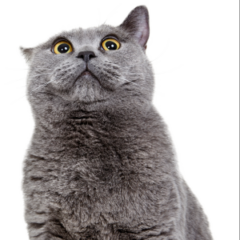- Irene Keliher
- Dec 21, 2024
- 11 min read
Updated: Nov 5
Key Points
Collies, Old English Sheepdogs, and Tibetan Mastiffs are among the fluffiest dog breeds in the world.
Fluffy dogs can be hypoallergenic, but they typically still require thorough grooming routines.
Collies, Keeshonds, and Newfoundlands are some of the best fluffy dog breeds for families with children.
Have you seen those t-shirts that say, “Dog hair, don’t care”? They’re made for owners of these fluffy dog breeds. From the tiniest poodle to the biggest Newfoundland, the fluffiest dog breeds range in size, strength, color, and temperament — but they’re all extremely soft and huggable. (Yes, even the formidable Tibetan Mastiff!)
If you’re looking for a truly fluffy pet, this guide is for you. Sure, you’ll want to invest in a good brush and vacuum — or five — but it’ll be worth it. Let’s dive into 20 majorly furry dog breeds, how you can keep their coats as clean and tangle-free as possible, and which ones may fit into your lifestyle the best.
Collie
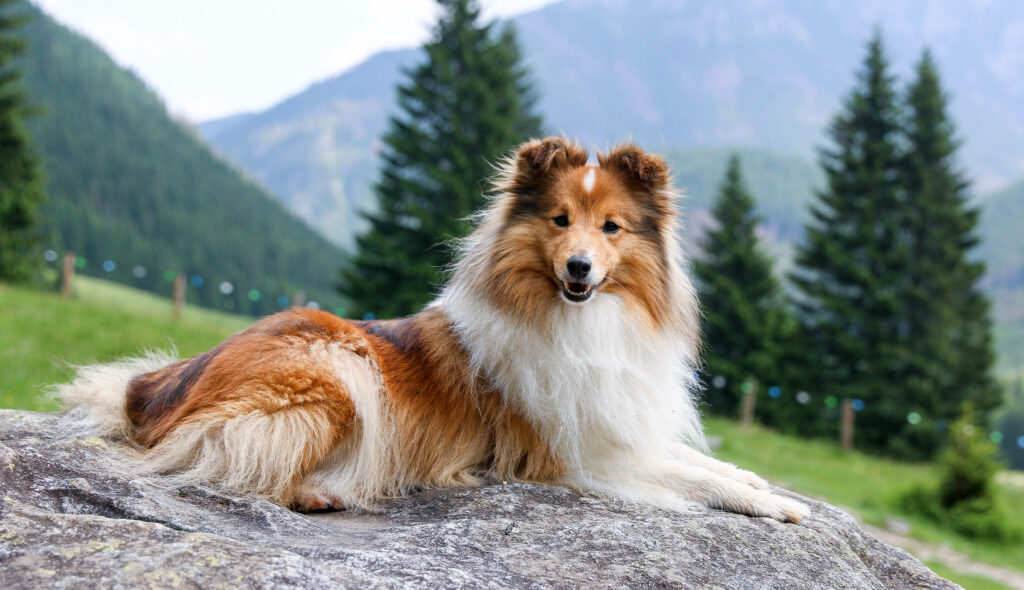
Who they’re for: Collies are a great dog for families with children, as they’re patient and affectionate toward kids. However, these working dogs have lots of energy and need space to roam, so they’re best suited for people with large yards and the time and energy needed to engage with them.
Among the various types of Collie, the Bearded Collie is absolutely the floofiest. However, the better-known Rough-coated Collie is also a majestic fluffer. This herding breed is known for its smarts, and a Border Collie named Chaser is even known as “the smartest dog in the world.” She knows the names of 1,000 distinct dog toys.
If you choose a Collie to join your family, be sure to give them plenty of exercise and enrichment so they can use those big canine brains of theirs.
Chow Chow
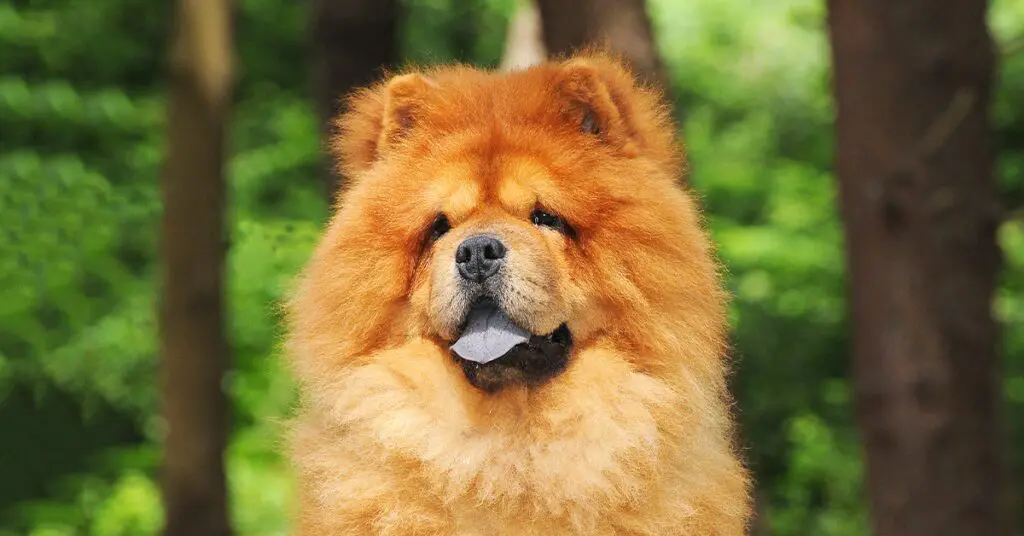
Who they’re for: If you don’t want a velcro dog, you may love the Chow Chow’s independent spirit. And if you don't mind attention and love social media, these extra-fluffy, extra-lovable dogs garner attention wherever they go. However, Chow Chows aren't great for first-time dog owners.
Originally serving as guard dogs in ancient China, this striking breed boasts an enormous double coat and a unique blue-black tongue. Because it grows thickly around their necks, the Chow Chow’s fur looks a lot like a lion’s mane. Even among fluffy dog breeds, the Chow Chow stands out for its fluffy ginger coat.
Their personality is fierce, like their fur. Expect a Chow Chow to display intense loyalty and become protective over their home and owner. They have strong hunting instincts and strong personalities, so they do best with secure yards and experienced owners.
Pomeranian
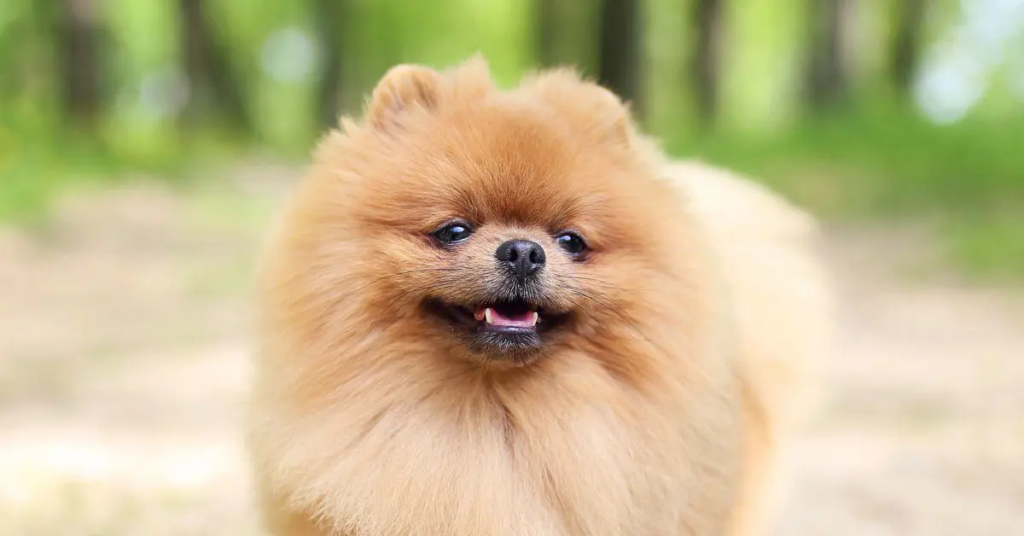
Who they’re for: Pomeranians have big personalities packed into tiny bodies, so they’re not always the best companions for small children.
The Pom, as it’s affectionately known, is a feisty companion with the fluffy coat of related spitz breeds. They’re one of the best dogs for traveling around town, as they’re easy to pick up and plop into a carrier.
Though a tiny toy breed, the Pomeranian is no shrinking violet. These little guard dogs like to work hard, play hard, and bark a lot at your neighbors. All that personality can be a lot of fun. Add in that expressive face and mountains of fluff, and you’ve got yourself a great companion.
Samoyed
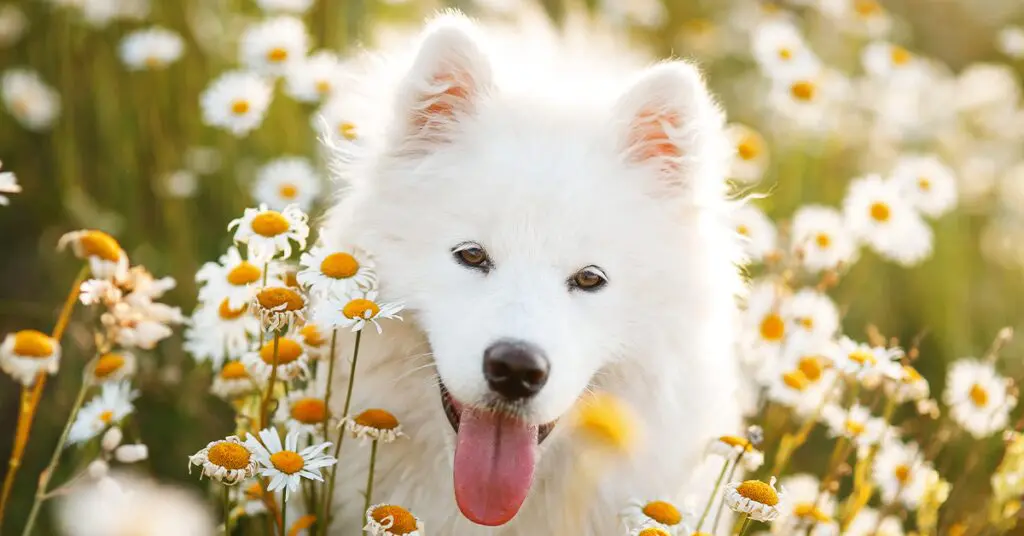
Who they’re for: As big as they are, Samoyeds are gentle with small children and other pups, so they make great family dogs.
Do you want a dog that makes all your neighbors jealous? When you’re walking down the block with your Samoyed, you’ll draw attention. These snow-white beauties are working dogs, originally meant to pull sleds in the frozen winter wonderland of Russia’s far north. Like a lot of cold-weather dog breeds, they aren't as big as they look — most of their bulk is pure fluff.
As domestic pets, they’re quirky, loyal, and super smart. They’re also known for being a little aloof, especially with anyone outside their family. So no, they do not want to snuggle with strangers, but they will accept treats.
Old English Sheepdog
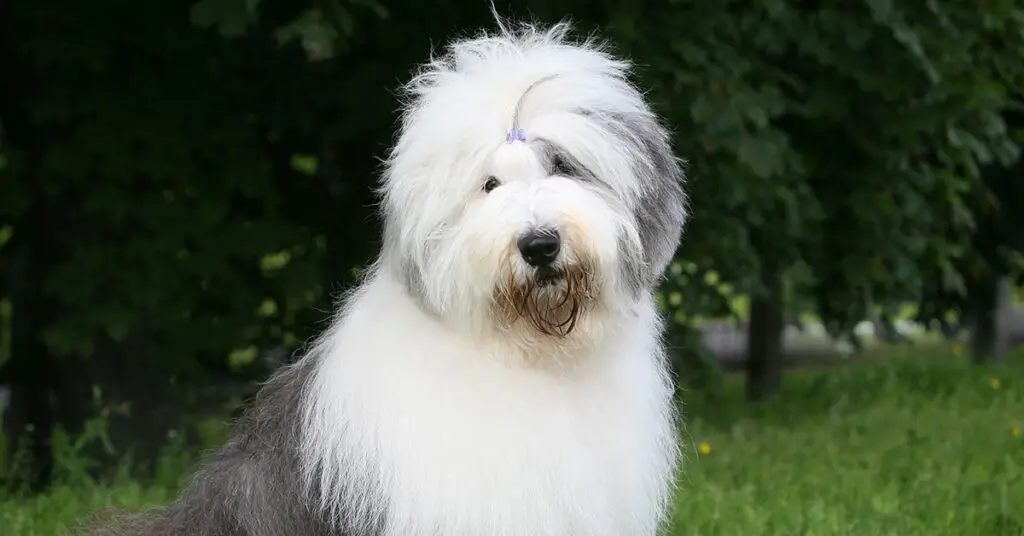
Who they’re for: Sheepdogs aren’t only great farm dogs. They’re also protective toward small children, although they’re a bit more selective when it comes to other pups in the family.
There’s something both lovable and humorous about the old English sheepdog, perhaps because it’s had a starring role in cartoon classics like The Little Mermaid and Looney Tunes. Today, sheepdogs still work on livestock farms, where their herding abilities keep everybody in line.
American Eskimo Dog
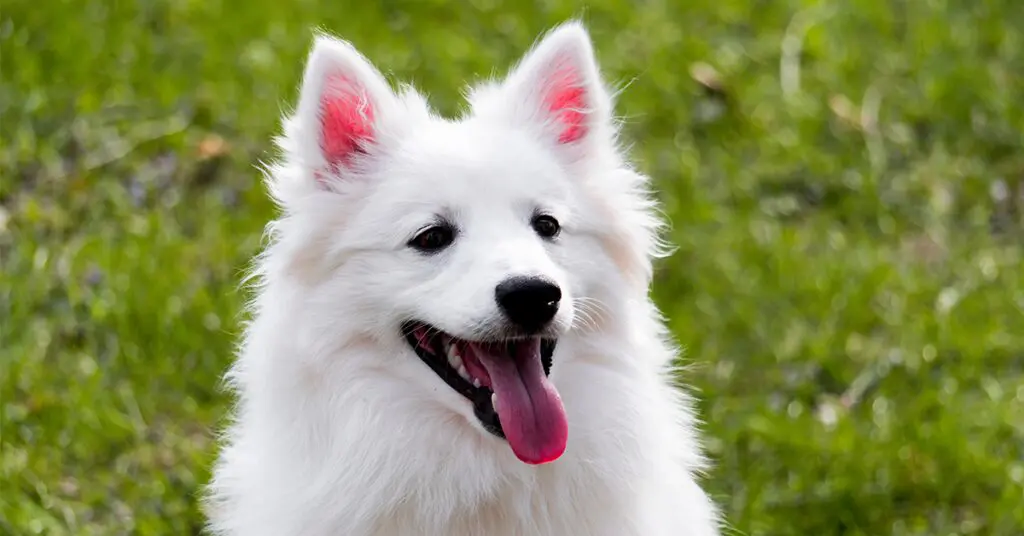
Who they’re for: Eskies are great pups for owners who can give them a good balance of regular exercise, mental stimulation, and indoor cuddle time.
Despite its name, the American Eskimo Dog actually originated in Germany. Descended from the German Spitz, the American Eskimo Dog was renamed during World War I because of anti-German sentiment. These days, they’re often called Eskies by their fans.
The Eskie is an active, busy dog that can weigh up to 35 pounds on the high end. With snowy white coats and loads of fluff, they’re eye-catching at the dog park.
Poodle
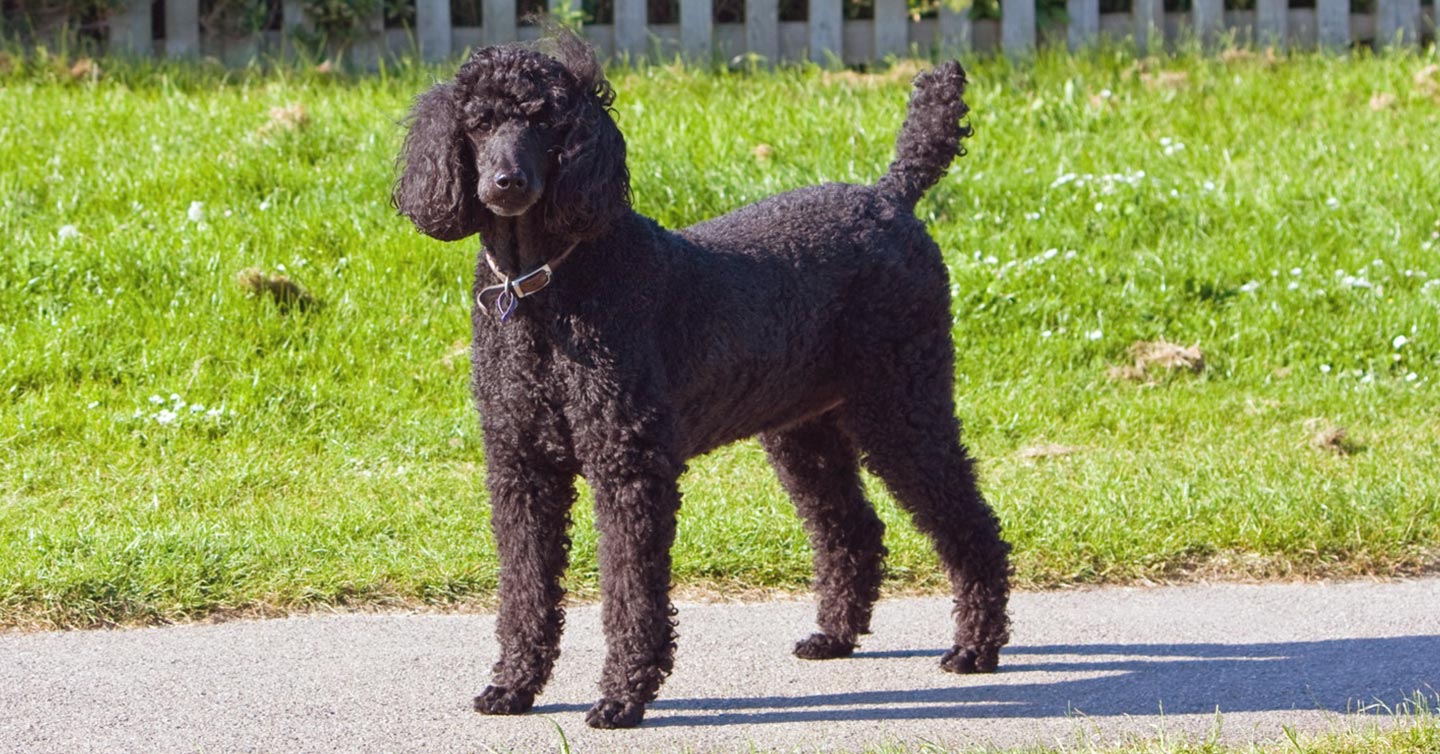
Who they’re for: Contrary to popular belief, poodles have huge hearts and generally get along well with children. They’re best suited for owners who can devote adequate time and attention to grooming and training them.
Though you might picture a fancy French pup when you hear the word “poodle,” this breed originates from Germany — and was originally used to hunt. The poodle is a water dog that loves to swim and is easy to train.
Ranging from the biggest standard poodle to the tiny miniature version, and sporting a variety of coat colors, this pup is justifiably popular worldwide. Their coats are thick and soft but also hypoallergenic, which means they aren’t big shedders and are less likely to fill your home with dander (the true cause of pet allergies).
Bernese Mountain Dog
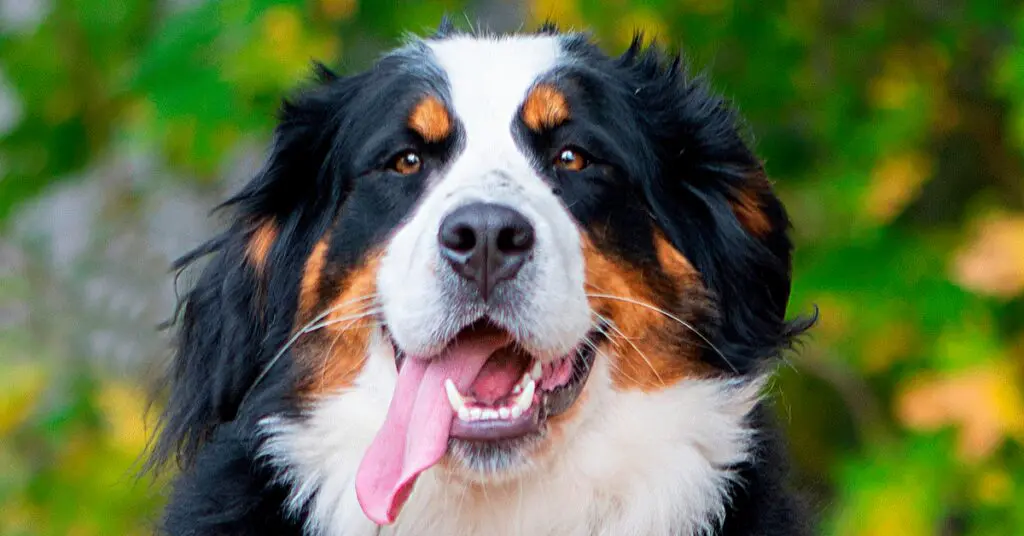
Who they’re for: Once they’re full-grown, Berners are relaxed family dogs, but puppies may be too boisterous for young children.
The Bernese Mountain Dog, or Berner, is everywhere these days. Increasingly popular as family pets for their gentle disposition and striking appearance, they’re also truly adorable as puppies.
Berners are friendly, goofy, and very huggable. These big babies have soft black and white coats meant to keep them warm in the Swiss Alps.
Keeshond
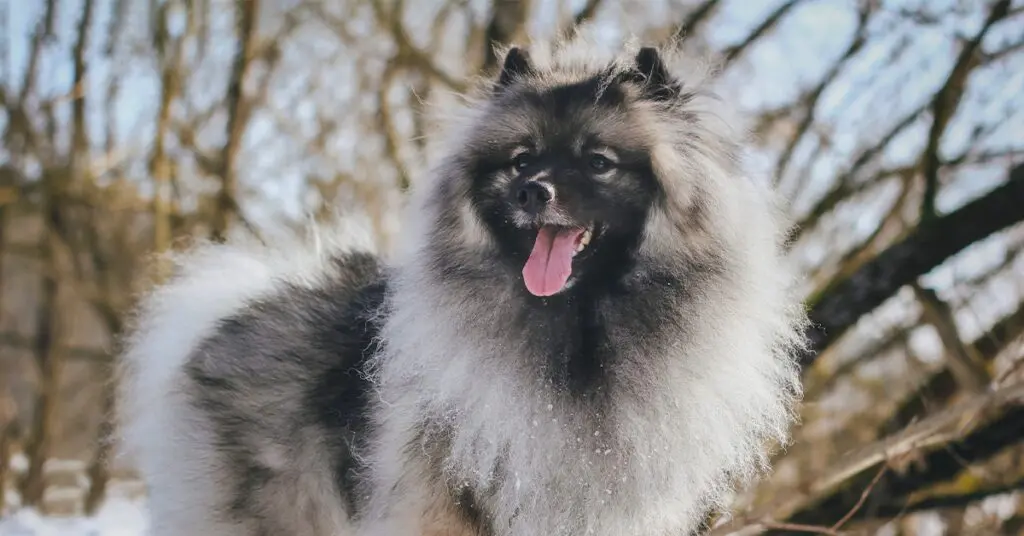
Who they’re for: Keeshonds are smart pups and thrive with owners who give them tons of mental stimulation.
Pronounced “kayz-hawnd,” the Keeshond is a fluffy Dutch dog related to other German Spitz breeds like the Pomeranian. In fact, a Keeshond looks a bit like a larger Pomeranian in a silvery black coat. That big feathery tail and those fox-like ears give the Keeshond an especially bright, friendly appearance.
Known for their trainability and their obedience, these clever dogs do well with plenty of interaction and exercise. All that fur is just begging for a cuddle puddle.
Pekingese
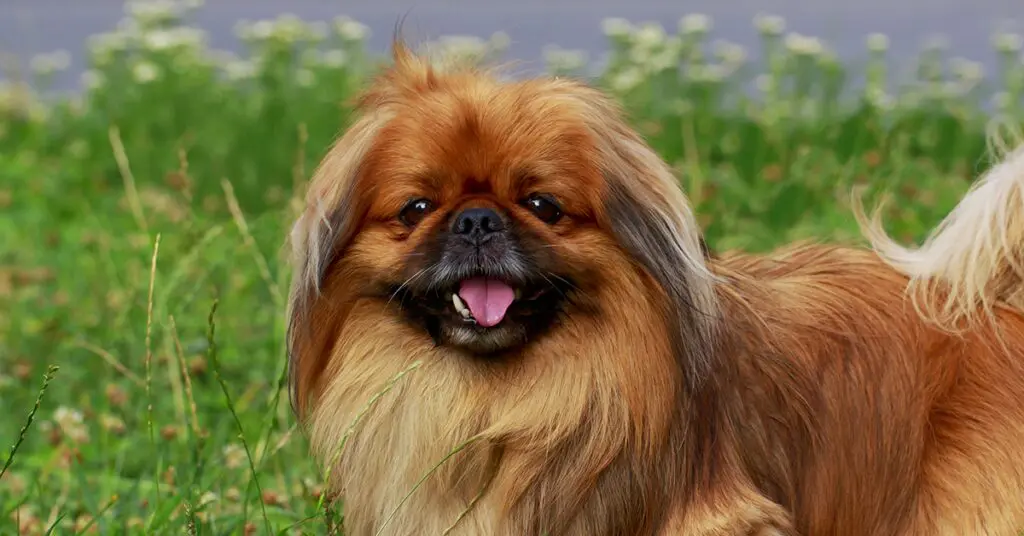
Who they’re for: Thanks to all that luscious fur (and their roots in Beijing), Pekingese pups love colder climates.
This petite Chinese pup is more than just a little ball of fluff. Bred as companions for Chinese royalty, the Pekingese have “lap dog” in their genes. But they do bring the fluff as well. Left to grow, their coats extend well past their feet.
Those luscious locks have brought them success on the dog show circuit, with four winners at Westminster. If you bring a Pekingese into your life, be prepared for a daily brushing routine to avoid matting. Aside from that, they’re a fairly low-maintenance breed that make good apartment dogs.
Lhasa Apso
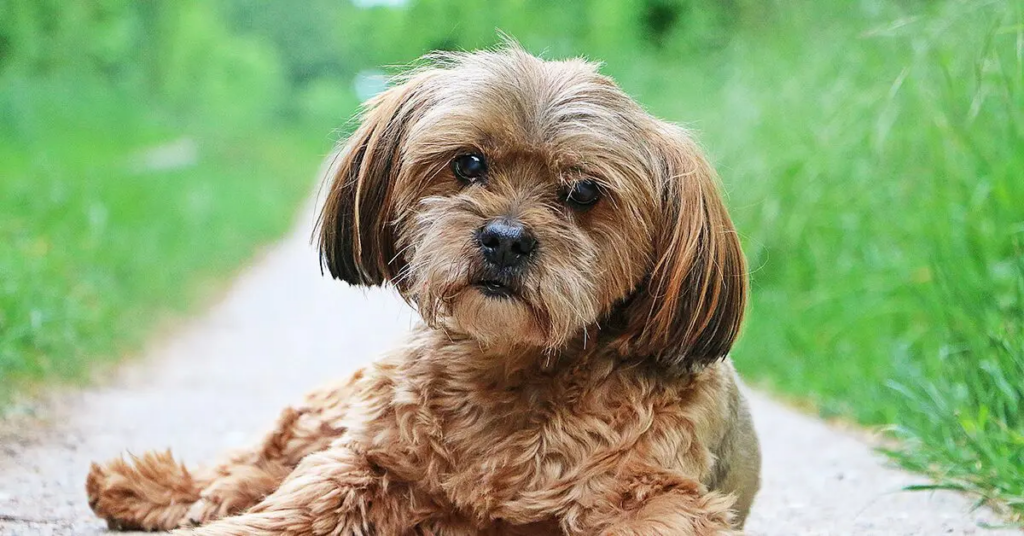
Who they’re for: These dogs love to cuddle but can be more difficult to train, so they may not be the best choice for first-time dog owners. They're best suited for owners looking for a small but fluffy dog.
Renowned for floor-length coats that appear to cover their eyes, these pups hail from Tibet. Originally used as watchdogs, they retain a sharp bark and an alert, intelligent personality.
Fortunately, their long, thick coat doesn’t shed. It does, however, require frequent brushing or clipping for ease of movement.
Shetland Sheepdog
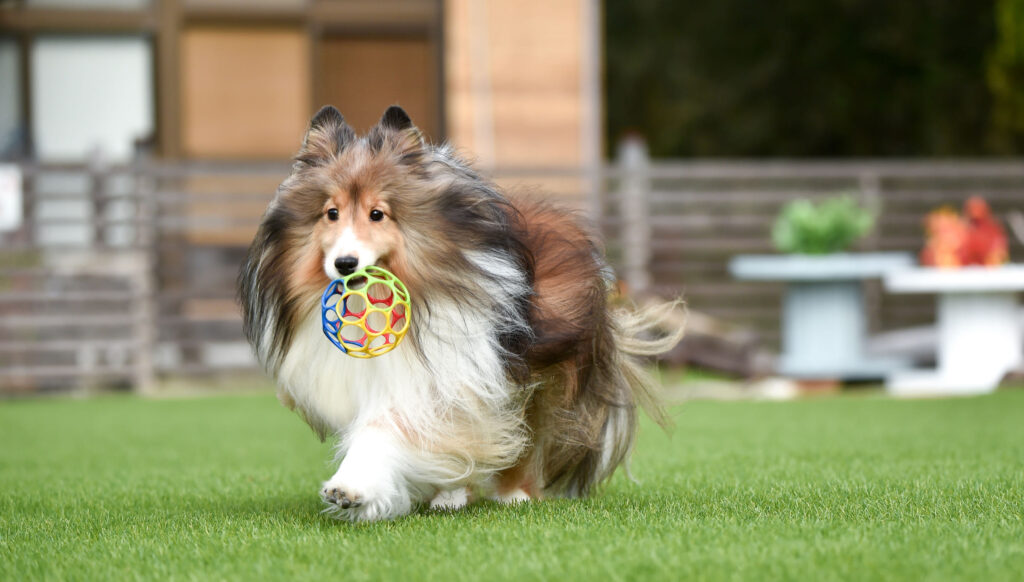
Who they’re for: If you can’t stand barking, Shelties may not be the best choice for you. But if you’re willing to train them through it (or live in the country), these pups are gentle and protective pets.
Better known as Shelties, these intelligent floofers will keep you busy. According to breed experts at the American Kennel Club, they’re obedient, affectionate, and great with children. What more could you want, really?
Keep in mind that Shelties are sensitive and smart, so they’ll notice your mood and respond in kind. Plus, they’re natural watchdogs. Prepare for plenty of barking at the doorbell.
Tibetan Mastiff
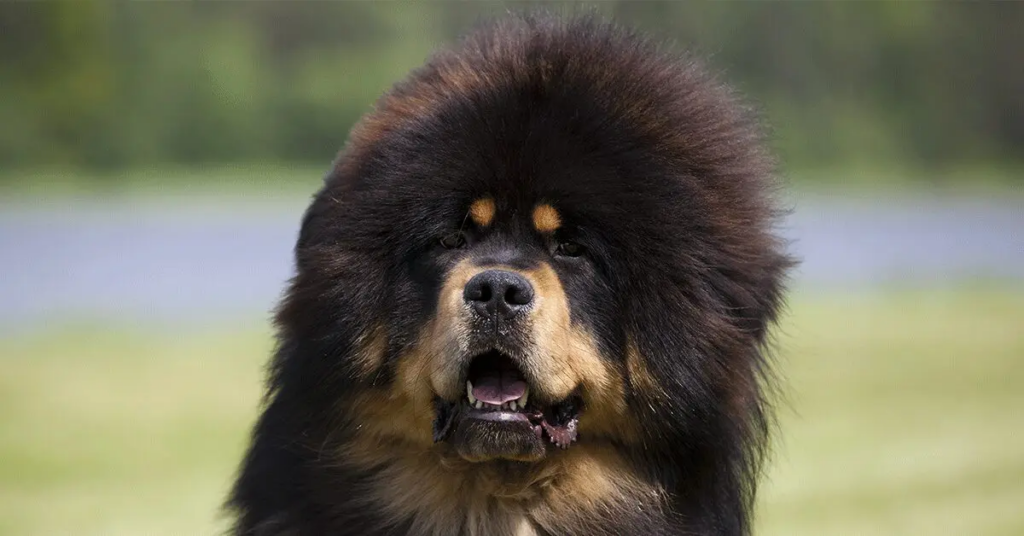
Who they’re for: If you’re looking for a pup to protect you on nighttime walks, Tibetan mastiffs have you covered, as they’re natural watchdogs. They're best suited for experienced dog owners who can handle and train a giant breed. They draw a lot of attention, so if you don't like to stop and talk to strangers, this isn't the pup for you.
This relatively rare breed hails from the mountains of Tibet. Truly enormous, Tibetan mastiffs clock in at around 170 pounds when they’re full-grown. This is not a dog you can pick up when they misbehave!
Thanks to their strength and size, Tibetan mastiffs make formidable guard dogs. However, they’re known to be stubborn and hard to train, so you’ll want to commit to a regular training schedule if you become a mastiff owner.
Great Pyrenees
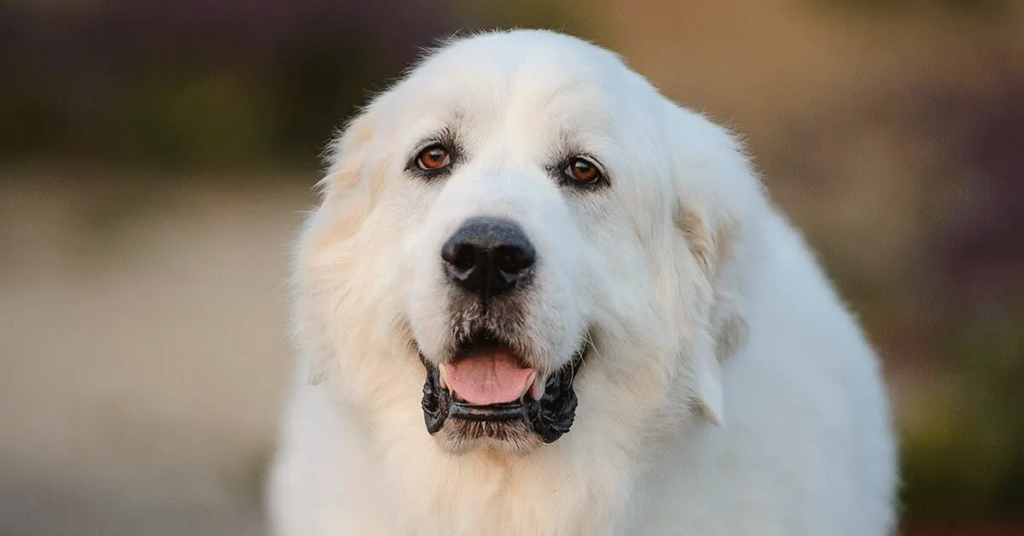
Who they’re for: Great Pyrenees don’t always love kids (or other dogs), but they’re mellow, loyal companions to adults.
Another of the herding dogs, the Great Pyrenees boasts some incredibly soft fluff. They’re also a large dog when fully grown, weighing up to more than 100 pounds as adults. Great Pyrenees are big, beautiful, and born for a photo op.
They’re also independent and protective. This is a great quality if you’re looking for a watchdog, of course. Just be sure to train your Great Pyr well so they can live up to their potential as a devoted dog.
Newfoundland
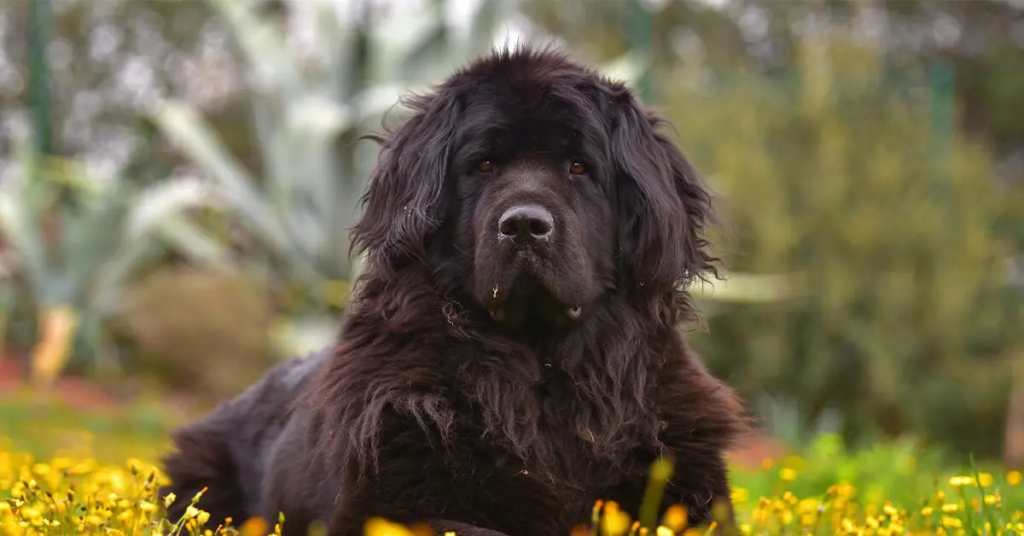
Who they’re for: As long as you can get past a little a lot of slobber and provide plenty of space for them to run around, Newfies make great family dogs.
Newfies are gentle giants who don’t know a stranger. Their impressive outer coat helped them swim in the icy cold waters around Newfoundland, Canada, where they were working dogs aboard ships.
The Newfie has a storied history, from assisting Lewis and Clark on their historic expedition to rescuing drowning victims by pulling them ashore. Yet they’re also content with a snuggle — and being a loyal, loving family dog.
Bichon Frise
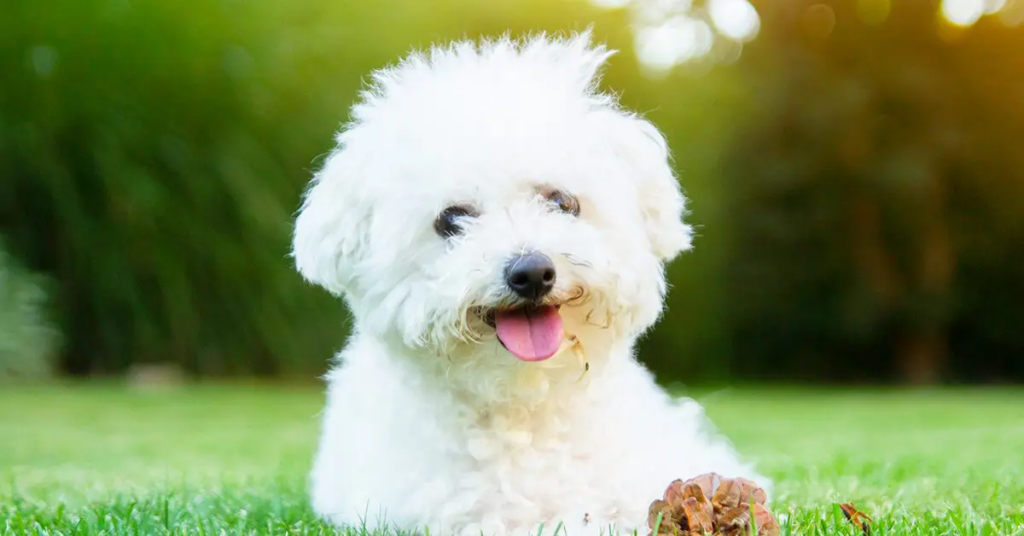
Who they’re for: Although they barely shed, Bichons do best with owners who will brush them two to three times a week.
Looking for small fluffy dog breeds? Sweet, sensitive, and basically a living stuffed animal, the little Bichon is a powder puff of love. Maxing out at 18 pounds, this popular small dog breed is tiny yet sturdy. They’re up for a long walk, but they don’t need all the exercise of a working breed.
In fact, the Bichon makes a wonderful companion for apartment dwellers, seniors, and families with young children. Their soft curls aren’t likely to shed, earning them a reputation for being one of the top fluffy hypoallergenic dog breeds.
Maltese
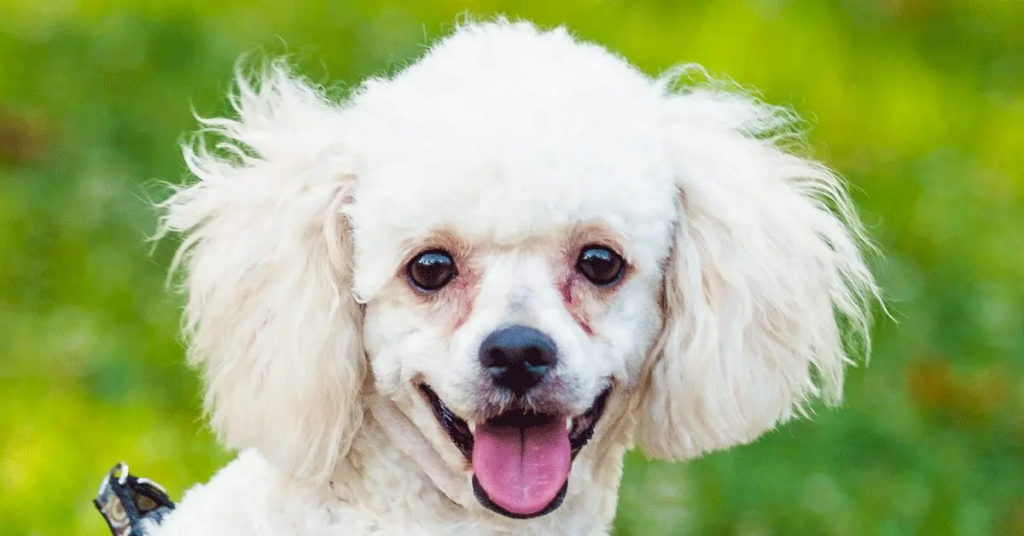
Who they’re for: Due to their tiny size, these pups do well in apartments and don’t need tons of exercise.
The silky white Maltese is another toy breed with princess-perfect locks. They’re one of the prettiest small fluffy dog breeds, usually weighing less than 7 pounds.
As show dogs, Maltese have elegant coats that are often left to grow to the floor. However, many dog owners opt for more regular clipping for easier maintenance. The Maltese is more than just a pretty face, though — expect watchdog qualities, along with a stubborn nature that requires good training.
Shih Tzu
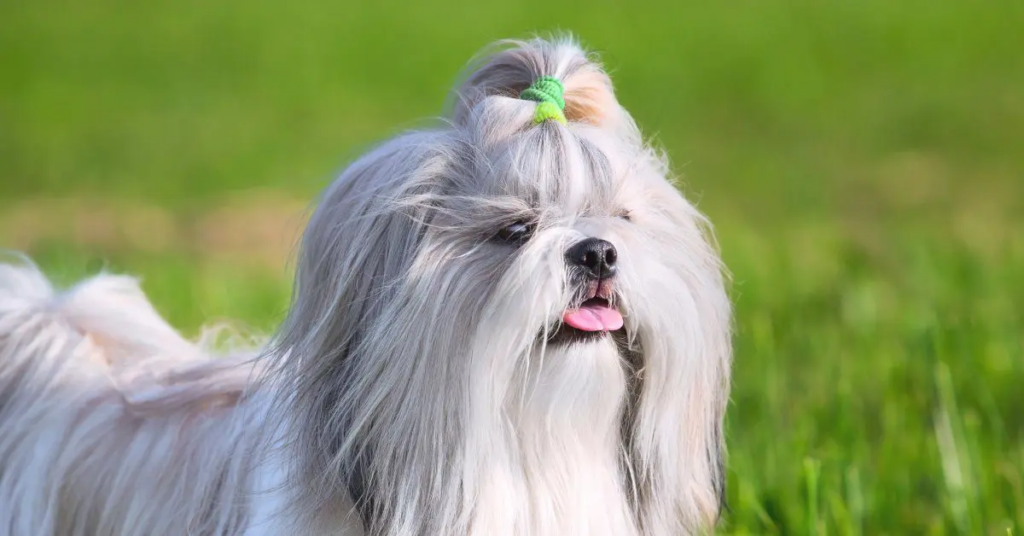
Who they’re for: Shih Tzus are happiest alongside homebodies who love to chill out, cuddle, and give them daily brushes.
Are you looking for a snuggle? So is your Shih Tzu. This companionable little dog is known for its loving, mellow nature. Known in their native China as “lion dogs,” the
Shih Tzu are born to cuddle up in your lap. Soft, small, and playful, they’re beloved as family pets for good reason.
Famous Shih Tzu enthusiasts include Queen Elizabeth II, so you’re in good company when adding a Shih Tzu to your home.
Malamute
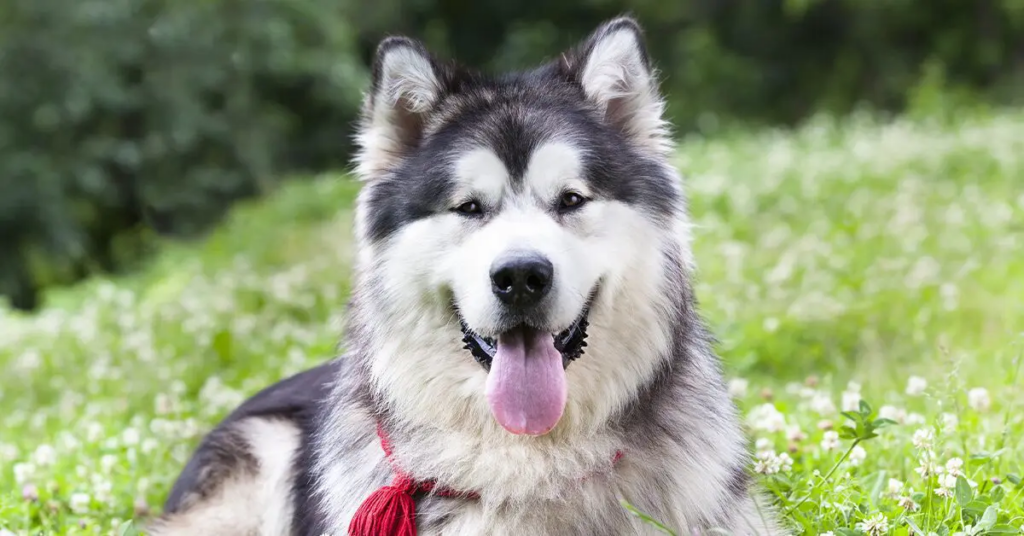
Who they’re for: If you live in a colder climate and want a companion to exercise with an Alaskan Malamute may be a great choice.
The Alaskan Malamute is like a bigger, fluffier husky, with all the personality and smarts of its sled dog relatives. These dogs make wonderful hiking companions and workers, as long as you’re committed to a solid training regimen.
The malamute is stubborn and wily, not to mention independent, so it’s not typically recommended for first-time dog owners.
Australian Shepherd
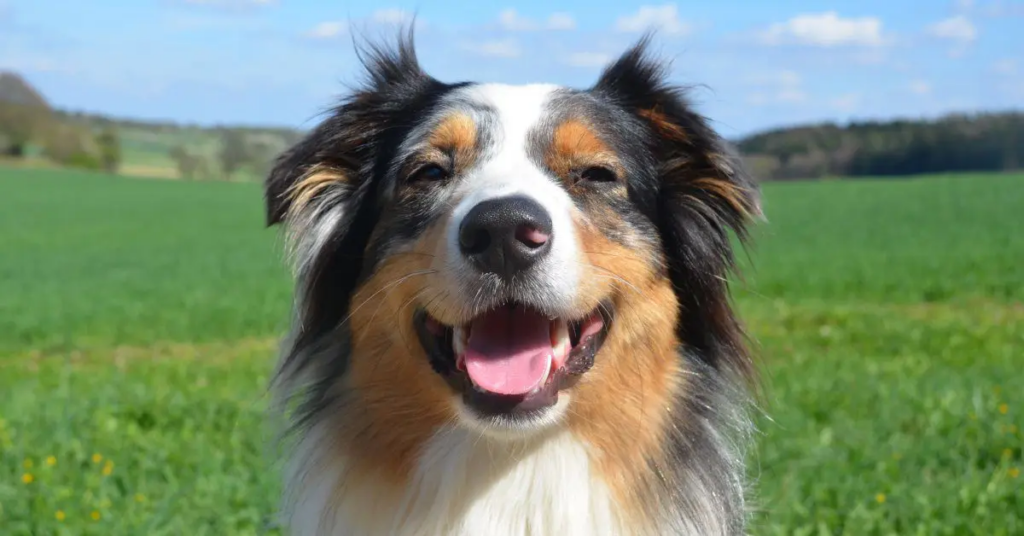
Who they’re for: These pups love having a job, so they’ll fit best with owners who will give them plenty of exercise and playtime.
No guide to the fluffiest dog breeds would be complete without the Aussie! These super-smart herding dogs are popular for their beauty, intelligence, and loyalty.
Like other dogs who were bred to keep livestock in line, they need a lot of activity. An Australian Shepherd thrives when it can run, leap, and catch plenty of Frisbees.
Grooming tips for fluffy dog breeds
Dog owners considering a fluffy dog breed for a family pet should consider their grooming needs carefully. After all, everyone deserves a good hair day — even your dog.
Here are a few tips to consider:
Pick up de-shedding tools: Regular de-shedding can help keep your pup’s coat healthy in between trips to the groomer. Purchase and learn how to use tools like a rubber-bristled brush, steel comb, and wire slicker.
Establish a regular routine: Because fluffy dogs require more substantial grooming, it’s important to establish a regular routine so it doesn’t fall by the wayside. First, learn how often your dog needs care (whether it’s daily or weekly), and stick to a schedule once you’ve established good habits.
Visit a groomer regularly: Determine how often your dog should go to the groomer and conduct research to see if your pup’s breed can benefit from a haircut (such as a short haircut for poodles) at certain times of the year.
The best fluffy dog breeds for children
While some fluffy dogs are better with children than others, it’s always important to supervise your pup when they’re around your kids. That said, here are a few fluffy dog breeds that get along with kids.
Collie
Keeshond
Newfoundland
Fluffy dog breeds that don’t shed
It’s easy to assume that with all that hair, all fluffy dogs shed a lot. But you may be surprised to learn that some breeds don’t shed (much). No dog is 100% hypoallergenic (meaning no dog is 100% allergen-free), but let’s take a look at the fluffiest dogs that shed the least.
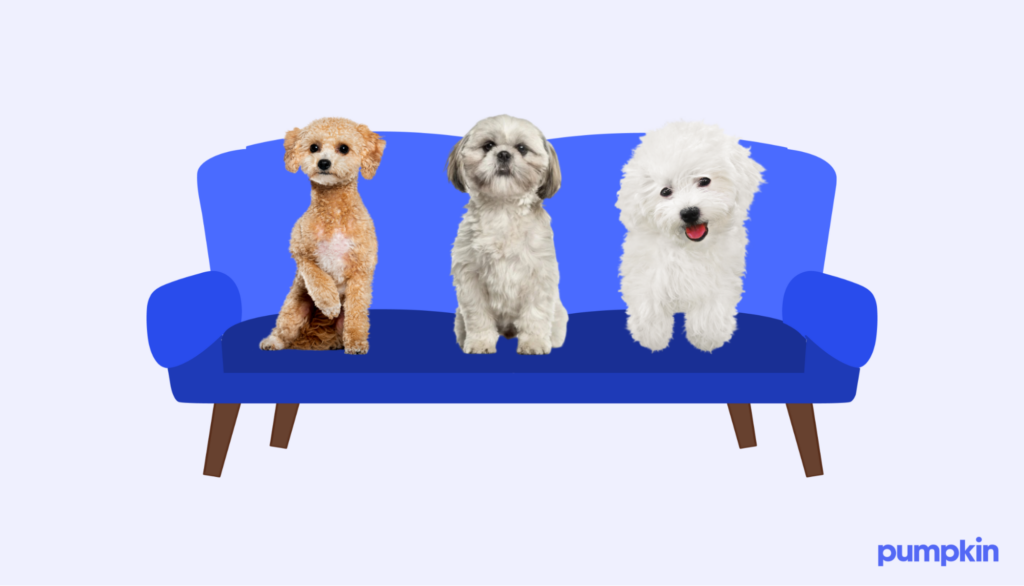
Poodle
Shih Tzu
Bichon Frise
Should I get a fluffy dog?
Most fluffy dog breeds require a high-maintenance grooming routine to take care of all that beautiful fur, but not all of them do. Either way, only you can decide if getting a fluffy dog is the right decision. But there are plenty of affectionate and lovable breeds with a wide range of activity levels, so you’re likely to find one that suits your lifestyle.
As a responsible pet owner, you may want to consider pet insurance. Learn more about what dog insurance covers and how it can help you make an informed decision about your pet’s health needs.
FAQs
What are examples of small fluffy dog breeds?
Examples of the smallest fluffy dogs include:– Bichon Frise– Lhasa Apso– Maltese– Pekingese– Pomeranian
What is a big white fluffy dog that looks like a husky?
Samoyeds are often thought to look like huskies, as they have white coats and are comfortable in colder temperatures. They’re known as “smiling sled dogs” because the corners of their mouths turn up so that icicles don’t form on their faces. They were initially bred to be sled dogs in Siberia.
Are there fluffy terrier dog breeds?
Not many! Terriers tend to have short or medium-length coats. However, the Skye Terrier has a long coat that needs frequent grooming (it also sheds a lot). These terriers are very affectionate dogs and not always the best with other dogs and children.
REFERENCES

